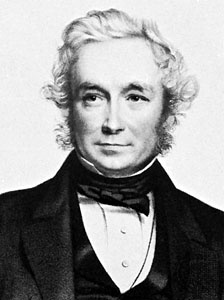Henslow, John Stevens
British botanist
born Feb. 6, 1796, Rochester, Kent, Eng.
died May 16, 1861, Hitcham, Norfolk
 British botanist, clergyman, and geologist who popularized botany at the University of Cambridge by introducing new methods of teaching the subject.
British botanist, clergyman, and geologist who popularized botany at the University of Cambridge by introducing new methods of teaching the subject.Henslow graduated from St. John's College at Cambridge in 1818 and then turned to natural history, making geological expeditions to the Isle of Wight and the Isle of Man with the English zoologist Adam Sedgwick, with whom he later established the Cambridge Philosophical Society (1821). In 1822 he was made professor of mineralogy at Cambridge, and in 1824 he was ordained. In 1827 he became professor of botany at Cambridge, where he introduced a teaching technique fostering independent discovery. His students were given plants and asked to examine and record the characteristics of the structures they found. This method, combined with unusual field trips, interesting lectures, and Henslow's natural enthusiasm, made botany one of the more popular subjects at the university and served as a source of inspiration to Charles Darwin, Henslow's favourite pupil and friend.
In order to persuade farmers to apply scientific methods to their operations, Henslow gave public lectures on the fermentation of manure and wrote newsletters for publication in local newspapers. During the potato famine (1845–46) in Ireland, he showed stricken farmers how to extract starch from rotten potatoes.
Henslow's publications include A Catalogue of British Plants (1829) and The Principles of Descriptive and Physiological Botany (1835).
- Eger
- Egeria
- Egerszegi, Krisztina
- Egerton Ryerson
- egg
- egg and dart
- Thomas Warton, the Younger
- Thomas W. Dyott
- Thomas Weelkes
- Thomas Wentworth Cleveland, earl of
- Thomas Wentworth, earl of Cleveland
- Thomas Wentworth Higginson
- Thomas West, 12th Baron De La Warr
- Thomas West De La Warr, 12th Baron
- Thomas Wharton, 1st Marquess of Wharton
- Thomas, W I
- Thomas, William
- Thomas William Lamont
- Thomas William Robertson
- Thomas Willis
- Thomas Wilson Dorr
- Thomas Wolfe
- Thomas Wolsey, Cardinal
- Thomas Woolston
- Thomas Young